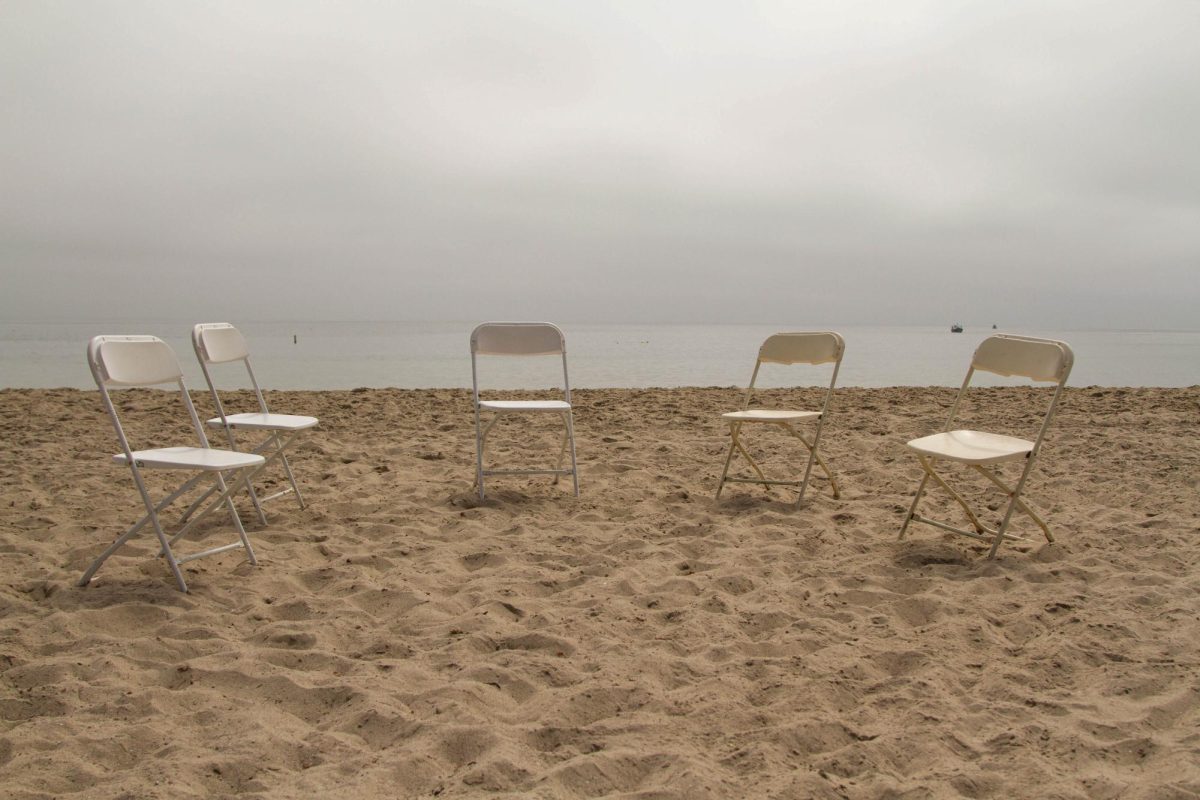Clothing. It’s something that everybody has, and at one point or another, grows out of. Once a person outgrows their clothing, they throw it away or give it to a second-hand store for someone else to use.
For us women, we tend to get rid of our clothes as soon as the trends change. Especially college students because, let’s face it, to share a closet in a tiny bedroom in Isla Vista with another girl and keep clothes from three years ago, just isn’t going to happen. So, out goes the old in a large plastic bag to make room for the new spring dresses and skirts from Urban Outfitters that I’ve been drooling over for the last two weeks.
According to the Textile Waste Solutions website, Santa Barbara County throws away more than 11 million pounds of usable clothing and household textiles into its very limited local landfill space.
On Feb. 28, I went to the Santa Barbara Public Library where a discussion session was held about the novel “Travels of a T-shirt” written by Pietra Rivoli. The discussion panel consisted of four UCSB professors and Mayor Marty Blum. The panel talked about how Rivoli had traced an average t-shirt through the process of being sewn in a factory in China, to being outsourced to India to be made into a textile, all the way to where the cotton was picked in Texas.
After the room had almost emptied, I had noticed that there was one man left who was off to the side. Christopher Mkpado – reserved and polite – hung back in the crowd with his hands behind his back. He wanted to let the panel become aware of a unique cause based off of a basic idea.
Recycling clothing.
Located in Santa Maria, Mkpado’s operation to recycle clothing to people in Africa started in 1995. In 2005, Mkpado’s company – Textile Waste Solutions – reported to have recycled roughly 1.2 million pounds of clothing to people in need instead of letting the textiles sit in a landfill. It takes about one year for a wool hat to biodegrade, according to Bureau of Land Management Environmental Education.
The Environmental Protection Agency reported that about 97% of post-consumer textile waste is recyclable, unlike paper, plastic, and aluminum waste recycling, most communities do not have systems in place to address the fabric component of the waste stream.
Even clothing that has been worn down to tatters, like my beloved faded jeans from my sophomore year of high school, can be recycled and used at construction sites.
“For every new home that is built, 100 pounds of rags are used,” said Mkpado. Rags can also be used in paint stores and machine shops just to name a few.
To help out Mkpado’s cause, he does not suggest dropping off large bags of last year’s clothes to his warehouse in Santa Maria. Instead, he would like people to just give their old clothes to thrift stores in the Santa Barbara and Santa Maria areas. From there, Mkpado comes to collect clothing that would otherwise be thrown into landfill.
For more information, please visit www.twaste.com to be one the few educated on how you can help make the lives of others just by giving your old clothes to a thrift store.







